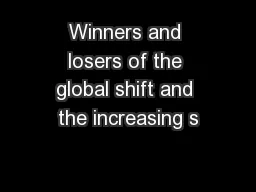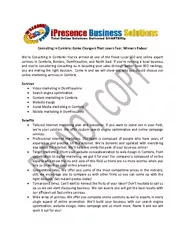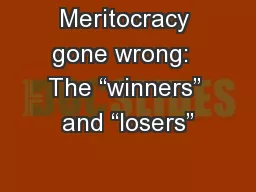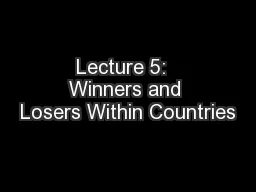PPT-Winners and losers of the global shift and the increasing s
Author : lois-ondreau | Published Date : 2017-12-20
By the end of this lesson you will Be able to explain why global shifts in economic activity bring a range of environmental economic and social impacts Be able to
Presentation Embed Code
Download Presentation
Download Presentation The PPT/PDF document "Winners and losers of the global shift a..." is the property of its rightful owner. Permission is granted to download and print the materials on this website for personal, non-commercial use only, and to display it on your personal computer provided you do not modify the materials and that you retain all copyright notices contained in the materials. By downloading content from our website, you accept the terms of this agreement.
Winners and losers of the global shift and the increasing s: Transcript
Download Rules Of Document
"Winners and losers of the global shift and the increasing s"The content belongs to its owner. You may download and print it for personal use, without modification, and keep all copyright notices. By downloading, you agree to these terms.
Related Documents














